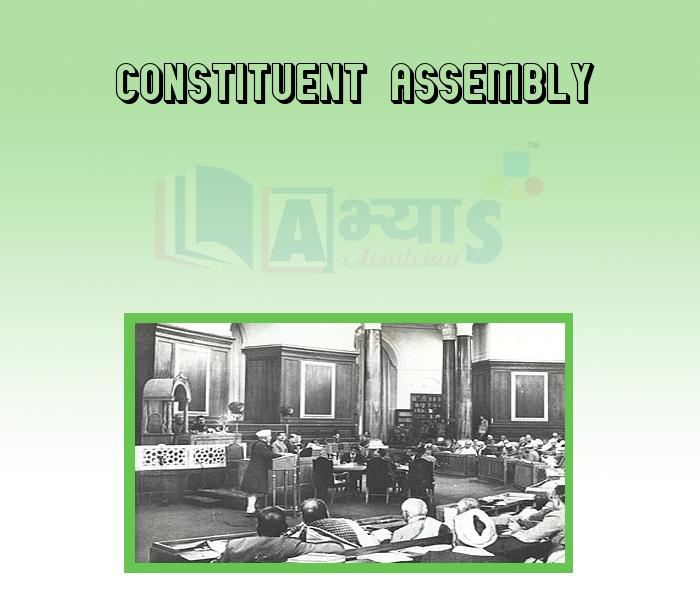Constituent Assembly










Constituent Assembly
Constituent Assembly:
The Constitution was drafted by the Constituent Assembly, which was elected by the elected members of the provincial assemblies. All the important personalities of that time, except Gandhi and Jinnah, were its members. The first meeting of the Constituent Assembly took place on Dec 9, 1946 with Dr. Sachidanand Sinha as its interim President. Dr. Rajendra Prasad was elected as its President on Dec 11, 1946.
Composition of Constituent Assembly:
The Constituent Assembly consisted of 389 members, of which 292 were elected by the elected members of the Provincial Legislative Assemblies while 93 members were nominated by the Princely States. But when the Muslim League decided to withdraw its members from the Constituent Assembly of India and with the creation of a separate Constituent Assembly for Pakistan on July 16, 1947, the membership of the Constituent Assembly of India was reduced to 299, out of which 229 represented the provinces and 70were nominated by the Princely states
In which of the following year Interim Government was established ? | |||
| Right Option : D | |||
| View Explanation | |||
The Constitution of India was passed and adopted by the ___________________ on 26 November 1949. | |||
| Right Option : A | |||
| View Explanation | |||
Who among the following first presented the idea of the Constitution Assembly to create a constitution for India ? | |||
| Right Option : A | |||
| View Explanation | |||
Students / Parents Reviews [10]
It has a great methodology. Students here can get analysis to their test quickly.We can learn easily through PPTs and the testing methods are good. We know that where we have to practice

Barkha Arora
10thBeing a parent, I saw my daughter improvement in her studies by seeing a good result in all day to day compititive exam TMO, NSO, IEO etc and as well as studies. I have got a fruitful result from my daughter.

Prisha Gupta
8thIt was good as the experience because as we had come here we had been improved in a such envirnment created here.Extra is taught which is beneficial for future.

Eshan Arora
8thMy experience with Abhyas academy is very good. I did not think that my every subject coming here will be so strong. The main thing is that the online tests had made me learn here more things.

Hiya Gupta
8thMy experience was very good with Abhyas academy. I am studying here from 6th class and I am satisfied by its results in my life. I improved a lot here ahead of school syllabus.

Ayan Ghosh
8thAbout Abhyas metholodology the teachers are very nice and hardworking toward students.The Centre Head Mrs Anu Sethi is also a brilliant teacher.Abhyas has taught me how to overcome problems and has always taken my doubts and suppoeted me.

Shreya Shrivastava
8thI have spent a wonderful time in Abhyas academy. It has made my reasoning more apt, English more stronger and Maths an interesting subject for me. It has given me a habbit of self studying

Yatharthi Sharma
10thA marvelous experience with Abhyas. I am glad to share that my ward has achieved more than enough at the Ambala ABHYAS centre. Years have passed on and more and more he has gained. May the centre flourish and develop day by day by the grace of God.

Archit Segal
7thAbhyas Methodology is very good. It is based on according to student and each child manages accordingly to its properly. Methodology has improved the abilities of students to shine them in future.

Manish Kumar
10thMy experience with Abhyas is very good. I have learnt many things here like vedic maths and reasoning also. Teachers here first take our doubts and then there are assignments to verify our weak points.
